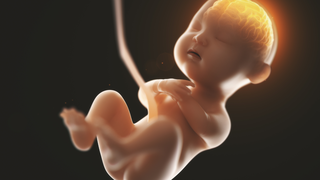In this article:
What Is Facial Paralysis?
Facial paralysis is a condition where one side of the face becomes weak or immobile due to temporary nerve dysfunction. The facial nerve (cranial nerve VII) controls the muscles of facial expression. When this nerve becomes inflamed or compressed, signals between the brain and facial muscles are disrupted.Common Signs Include:
- Drooping on one side of the face.
- Difficulty smiling or closing one eye.
- Drooling from the affected side.
- Loss of taste on one half of the tongue.
- Increased sensitivity to sound.
Why Does Facial Paralysis Occur During Pregnancy?
Pregnancy brings about massive physiological and hormonal changes that can indirectly affect nerve health. Below are some of the key reasons facial paralysis may occur:1. Hormonal Changes
- Increased levels of oestrogen and progesterone lead to fluid retention and swelling.
- This can compress the facial nerve within its bony canal, reducing nerve signal flow.
- The immune system adjusts during pregnancy to support the developing foetus.
- These shifts can make the body more prone to viral reactivations, such as the Herpes Simplex Virus (HSV), which is linked to Bell’s palsy.
- Increased blood volume and reduced venous return can lead to fluid accumulation, particularly around the face.
- This swelling may add pressure on the facial nerve, causing temporary paralysis.
- Some studies in India have noted that individuals with pregnancy-induced hypertension or pre-eclampsia.
When Does It Usually Occur?
Facial paralysis most often appears:- During the third trimester, when hormonal changes peak.
- Within the first week after delivery, when the body undergoes rapid adjustments in fluid balance and immunity.
Is Facial Paralysis Harmful to the Baby?
No. Facial paralysis does not directly affect the developing baby. It is a localised nerve condition that impacts only the facial muscles. However, since it may indicate underlying health issues such as hypertension or viral infections, timely medical consultation is essential.Diagnosis
A healthcare professional typically diagnoses facial paralysis through a physical examination and review of the patient's medical history.Diagnostic Steps May Include:
- Checking muscle movement on both sides of the face.
- Measuring nerve response through simple facial exercises.
- In some cases, blood pressure monitoring and blood tests may be recommended.
- If needed, MRI or CT scans are used to rule out other neurological causes.
Treatment and Management
Treatment focuses on reducing nerve inflammation, improving muscle strength, and preventing complications. Most cases resolve naturally within a few months, but early care can help facilitate a faster recovery.1. Medical Supervision
- A doctor may suggest safe anti-inflammatory medication if swelling or nerve inflammation is severe.
- In some cases, mild steroids may be prescribed after considering pregnancy safety.
- If a viral infection is suspected, antiviral medication may be considered under the strict guidance of a medical professional.
Regular facial exercises can improve blood flow and prevent muscle stiffness. Some effective movements include:
- Gently raising eyebrows and holding for a few seconds.
- Smiling widely and relaxing repeatedly.
- Puckering lips and blowing air gently.
- Closing eyes tightly and then opening slowly.
3. Warm Compress
Applying a warm compress on the affected side of the face for 10–15 minutes daily can ease discomfort and stimulate blood flow.
4. Eye Care
If the eyelid does not close fully:
- Use protective eye pads during sleep.
- Keep the eye moist with sterile drops to prevent dryness.
A nutrient-rich diet helps nerve healing. Include:
- Vitamin B12: Found in milk, paneer, and lentils.
- Vitamin B6 and B1: Help nerve regeneration.
- Omega-3 fatty acids: Found in walnuts and flaxseeds, promoting anti-inflammatory effects.
Natural and Supportive Remedies
Some supportive measures can enhance recovery:- Gentle facial massage using mild pressure can improve circulation.
- Adequate rest and sleep are crucial to nerve healing.
- Hydration helps maintain the body’s fluid balance and reduces swelling.
- Stress management through breathing exercises or meditation helps regulate the nervous system response.
Recovery Timeline
- Mild cases: Usually recover within 4–6 weeks.
- Moderate to severe cases: May take 2–3 months.
- Full recovery depends on the severity of nerve damage, the timeliness of treatment, and consistent self-care.
Whether you’re pregnant, a new mom, or navigating postpartum, you don’t have to do it alone. Join our support group to connect, share, and support one another.
FAQs on Facial Paralysis During Pregnancy: Understanding Causes, Symptoms, and Natural Recovery
- Can facial paralysis recur in future pregnancies?
While recurrence is rare, it can happen in some individuals. Maintaining good overall health, managing blood pressure, and following preventive measures can reduce the chances. - Does facial paralysis cause permanent damage?
In most cases, no. Nearly 80–90% of individuals regain full facial movement within a few months with proper treatment and care. - Can facial paralysis affect breastfeeding?
No, facial paralysis does not interfere with breastfeeding, as it only affects facial muscles. However, maintaining comfort and managing stress during feeding is advised for overall recovery.









